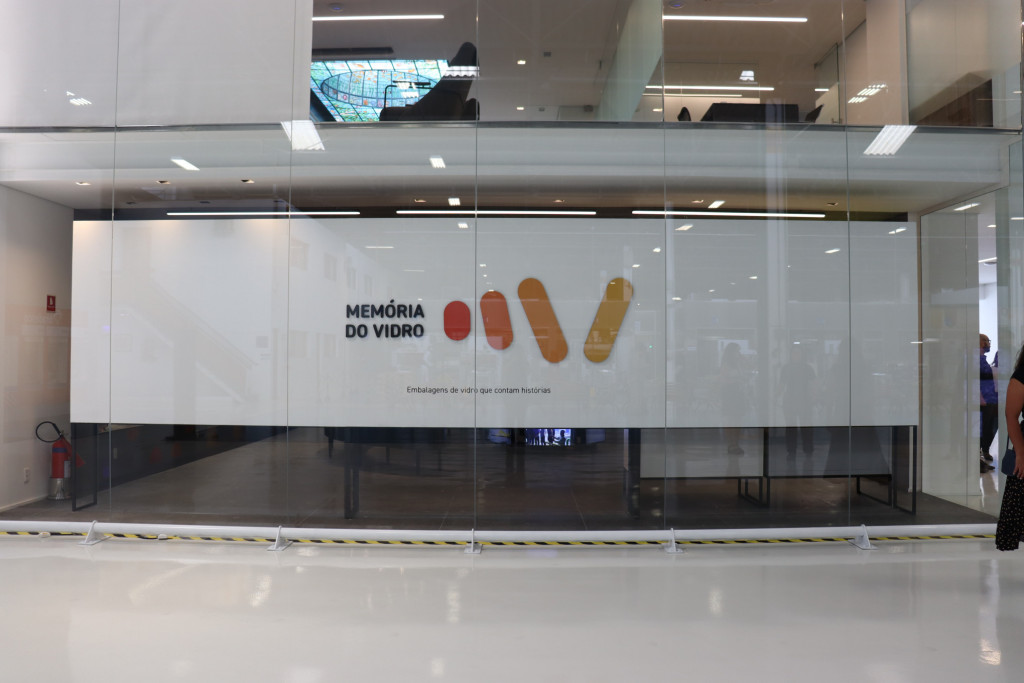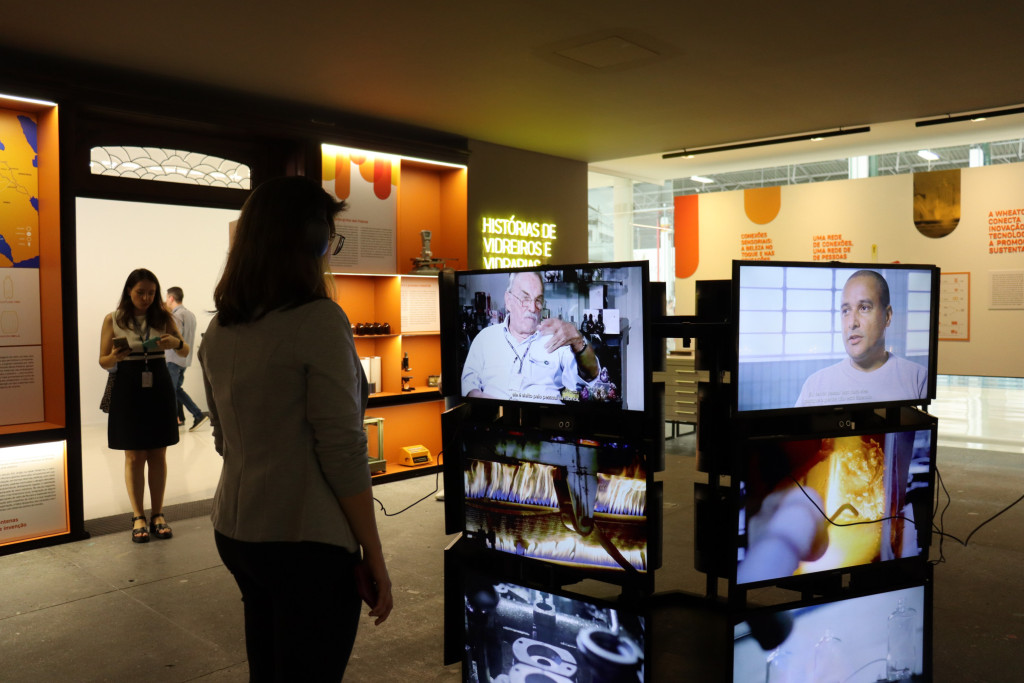
This project aims to valorize the glass packaging industry, glassworkers, and glassware workers, who are the foundation of this journey of success and who, together with Wheaton, have built these stories transformed into memories, experiences, and dreams of generations of yesterday, today, and the future.
The legacy built by Wheaton in the establishment of a Memory Center and its collection, as well as its journey as an integral part of the industrialization process in the Brazilian and global landscape, were the starting points for the conception of the “Glass Memory” space and its inaugural exhibition, titled “Glassmakers and Glassware Stories…”
Among other advances, the 1950s in Brazil are associated with significant industrial development and growth, characterized by investments in infrastructure and the economic opening to the entry of multinational companies. Thus, the foundation of Wheaton in the country, which occurred in the city of São Paulo in 1952, is directly linked to this historical moment, being one of the agents of this expansion and diversification of the industrial sector, as well as the inflow of foreign capital and the internationalization of the Brazilian economy.
Wheaton’s over 70 years today translate into a robust operation in the production of glass packaging and household utilities, bottle decoration, and the manufacturing of molds and equipment. This activity combines with a network of industries – pharmaceuticals, beauty and cosmetics, food, and the recycling chain – and, more than that, with people who tell stories, transform, and connect resources, ideas, and solutions into glass packaging for all life’s moments.
Understanding that a path to success is built on valuing the past, establishing solid and innovative connections in the present, and having a forward-looking approach to an increasingly sustainable future, Wheaton has structured its Memory Center since the beginning of the 21st century. The collection includes documents, audiovisual records, publications, equipment, and objects related to glass production, as well as more than 7,000 cataloged glass bottles, predominantly perfumes produced by various local and international manufacturers. This collection traces the journey of civilizations from the discovery of glass to its evolution in packaging, revealing the process of industrialization in Brazil and the world. Above all, it is a collection that narrates the stories of the people and families who built it, stories that are now gathered in the “Glass Memory” space and its inaugural exhibition “Glassmakers and Glassware Stories…”
The “Glass Memory” space
A brand for the history of glass packaging.
The project conceived for the “Glass Memory” brand incorporates elements in its construction that range from the foundations of the manufacturing process to the delicacy and sophistication of the products. Thus, this entire process, from the glass droplet to the glass packaging, is represented by a modern, dynamic graphic symbol that resonates with the stories, products, and people who are part of the universe in which both Wheaton and the “Glass Memory” space are situated. Graphic shapes in energizing colors that celebrate the historical legacy, current experiences and innovations, as well as the visions of a continually more sustainable future. It is a place that preserves and inspires the history and beauty of glass, dedicated to professionals, customers, and partners.
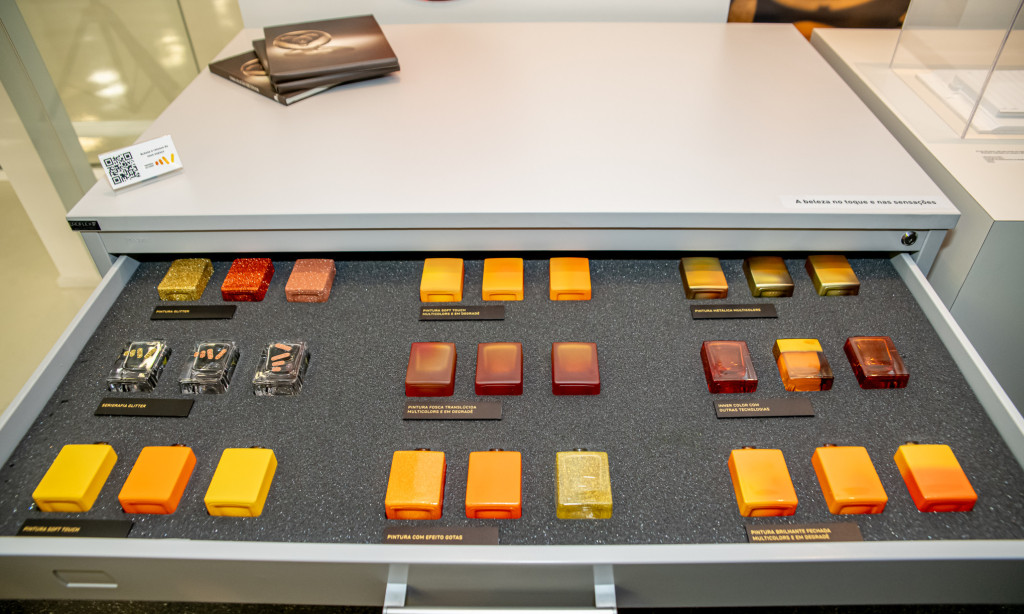
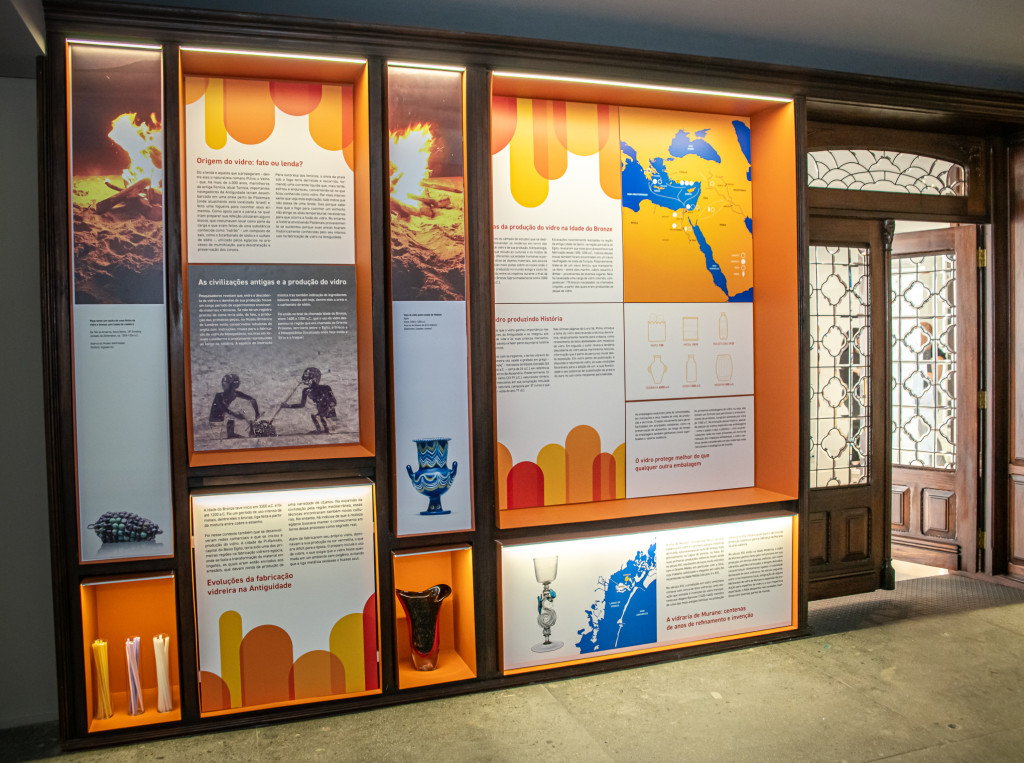
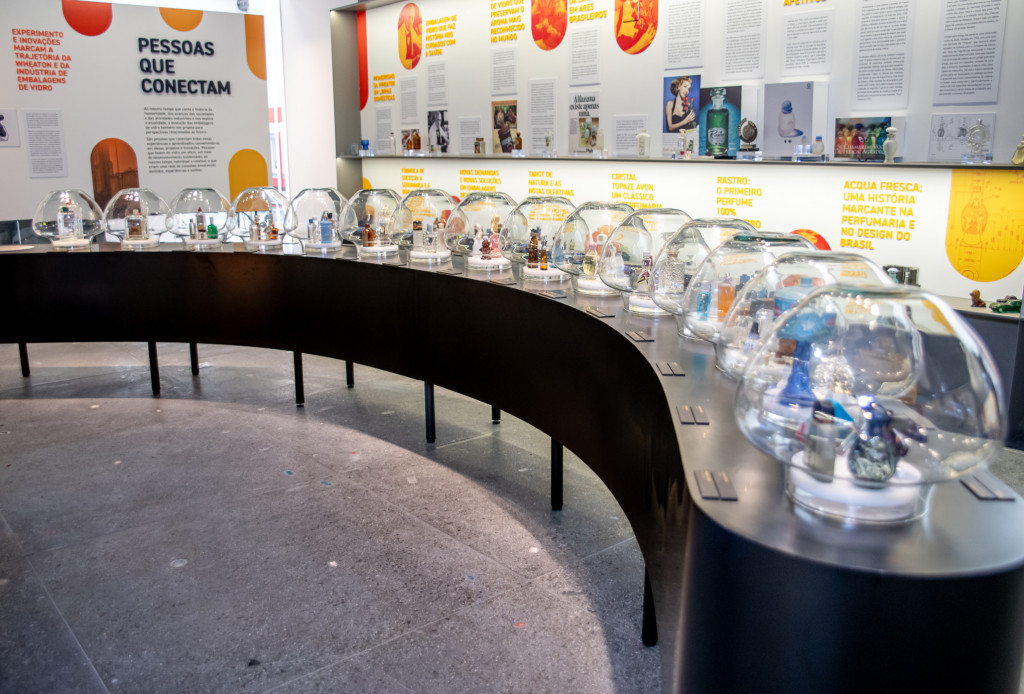
The exhibition
“Glassmakers and Glassware Stories…”
For the exhibition project, research was initially conducted along two historiographical lines: the history of humanity regarding discoveries, especially fire, glass, the evolution of its uses, and the industrial production of glass packaging; and the histories of Wheaton itself and the people associated with the company, such as individuals, citizens, and families embedded in the context of Brazilian industrialization. The primary sources for the historical-documentary study were mainly the collection from Wheaton’s Memory Center, including objects and bottles related to glassmaking, as well as consultations with some secondary sources in the glass packaging sector.
Based on this, the curatorial project of the exhibition “Glassmakers and Glassware Stories…” aimed to foreground the symbolic and material multiplicity of glass and the people who create these stories. Thus, the exhibition was structured around four thematic axes: “Origins, Discoveries, and Evolutions,” which covers the origin of glass, its use in packaging, its integration with human needs, and the evolution of society; the “People who Tell” axis, which reveals the narratives of individuals, citizens, and families who tell the story of the glass packaging industry in Brazil and around the world; the “People who Transform” axis, showing how raw materials result in glass packaging that brings well-being, art, and care to various moments in life; and finally, “People who Connect,” bringing a network of relationships established in the process of creating new and improved glass packaging solutions with positive impacts on society as a whole.
The project also included a concept for the spatial layout that encompasses these four themes, reminiscent of a roundtable discussion, like those that took place during the discovery of glass, around the campfires. A habit found in many civilizations throughout time, and reproduced in the exhibition in a contemporary language, inviting the audience to experience storytelling, sharing stories, experiences, projects, and dreams.
Regarding the development of the project
The “Glass Memory” space and its inaugural exhibition “Glassmakers and Glassware Stories…” project received support from Memória Web for its conception and production, in collaboration with the Wheaton team, the promoter of the initiative. The primary source of research was the collection housed in its Memory Center. The curatorial project is the result of collaboration among professionals involved in research, visual communication, and production, and it presents a narrative that spans from the history of glass, Wheaton, industrialization in Brazil, to future perspectives.
Exhibition Technical Information
Concept: Wheaton Group
Peter Gottschalk Junior
Peter Michael Gottschalk
Luiza Gottschalk
Renato Massara Junior
Ricardo Antonio Cristofalo Lopes
Caroline Martins Mass
Vanessa Misquini Canever
Arlete Gomes da Silva
Exhibition Design: ARKITITO architecture
Tito Ficarelli
Stefano Fernandes
Claudia Piaia
Exhibition: Glassmakers and Glassware Stories…
Coordination: Barbara Daniselli – Memória Web
Research and Content Production: Cristiélen Ribeiro Marques
Curatorial Project: Barbara Daniselli, Cristiélen Ribeiro Marques, Alexsandro Souza
Identity and Visual Programming: Alexsandro Souza – Dinamo Design
Production: Renata Peña – Memória Web
Administrative Coordination: Paula Fu – Memória Web
Revision: Regiane Matos
Audiovisual Production: Matthieu Rougé, André Cruz, Gabriel Piotto – Estúdio Zut
Model Production: Fernando Cunha Lima – Memória Web
Olfactory Resources: Claudia Galvão, Claudia Ciszevski, Daiana Saraiva, Fred Galvão,
Hugo Zambotti, Juarez Chagas, Tamiris Granatta – NOAR
